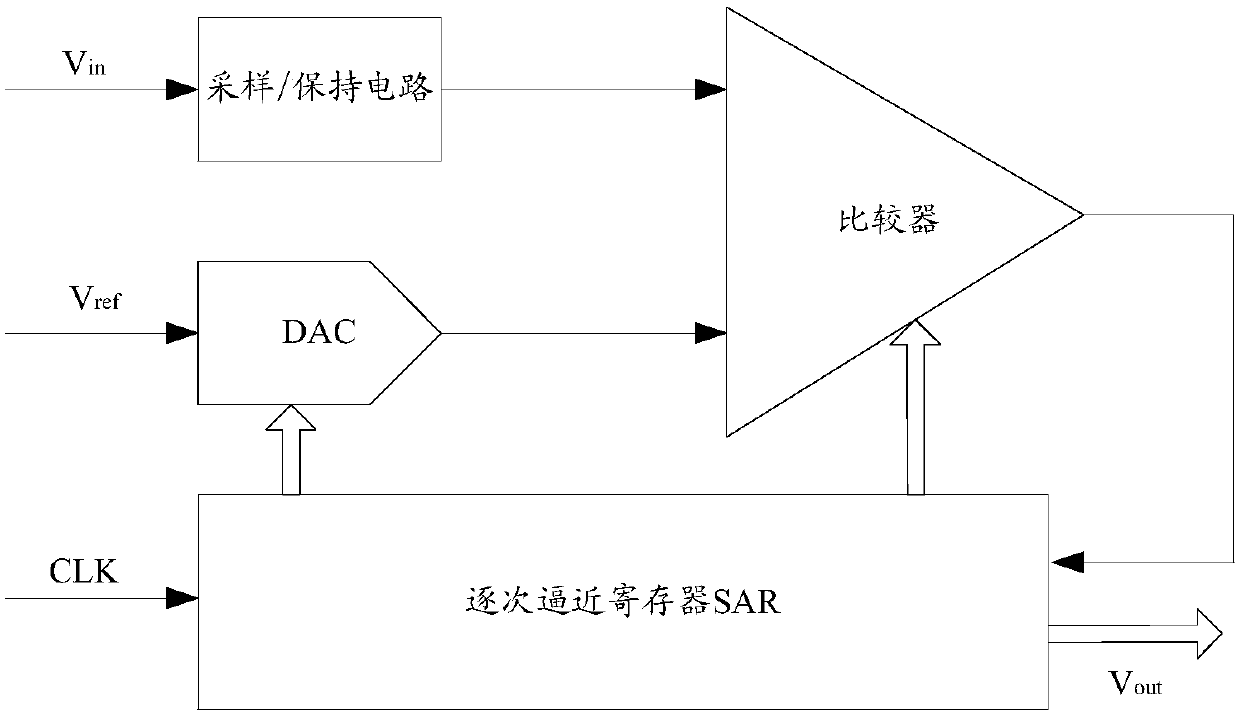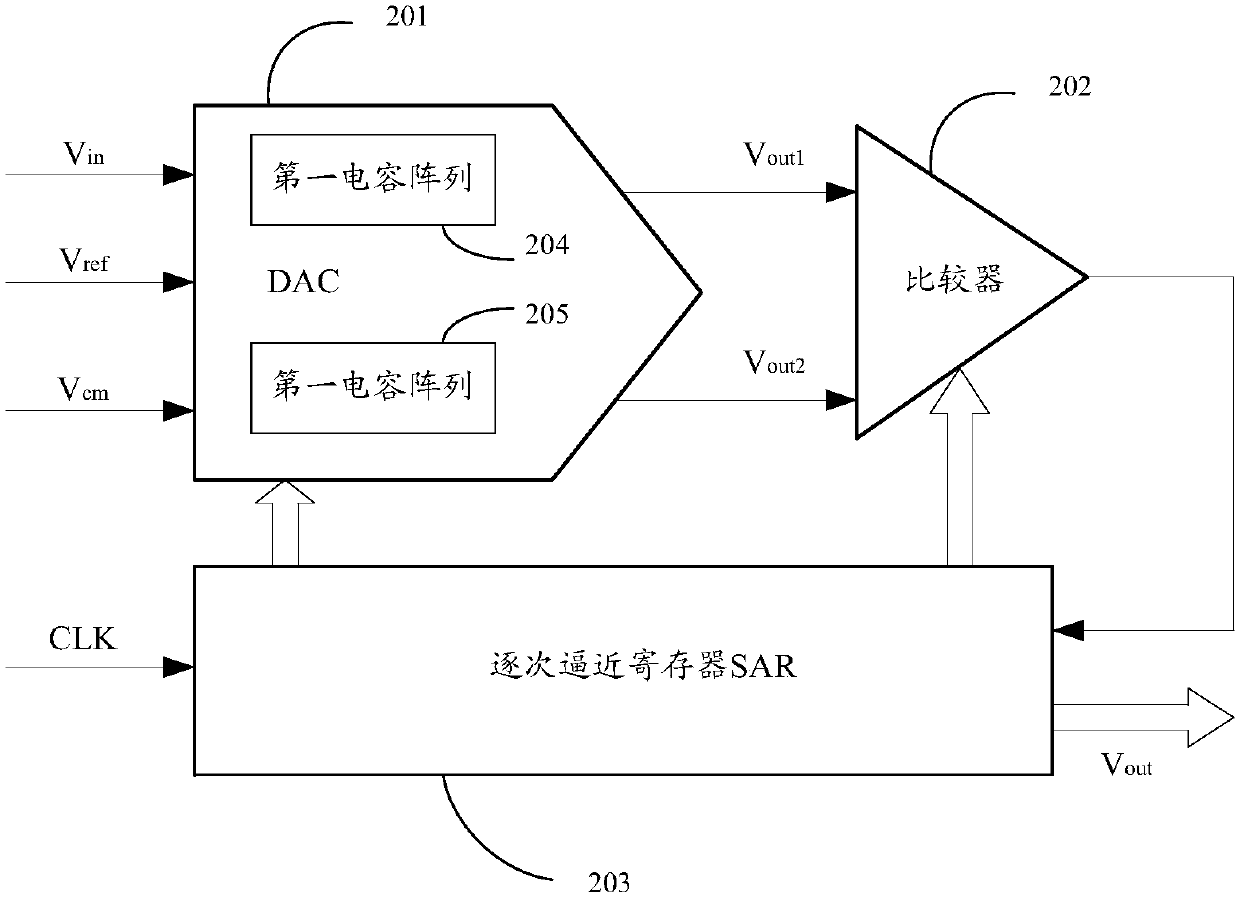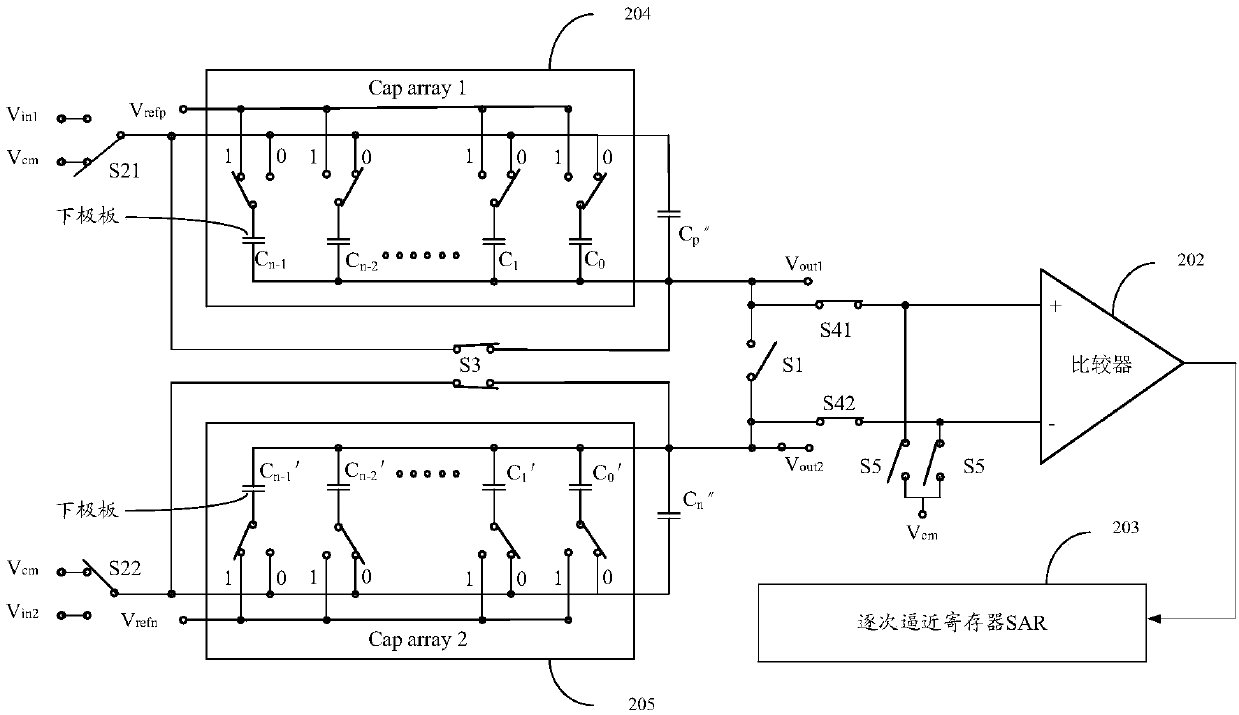Successive approximation type ADC circuit and analog-to-digital conversion method
A successive approximation and circuit technology, which is applied in the direction of analog-to-digital converters, can solve the problems of low conversion accuracy and high design complexity, and achieve the effects of improving conversion accuracy, simplifying design, and increasing comparison speed
- Summary
- Abstract
- Description
- Claims
- Application Information
AI Technical Summary
Problems solved by technology
Method used
Image
Examples
Embodiment Construction
[0049] In order to improve the conversion accuracy of the SAR ADC, an embodiment of the present invention provides a successive approximation ADC circuit and an analog-to-digital conversion method, including a digital-to-analog converter DAC for sampling and holding an input analog voltage signal, and a comparator for Comparing the magnitude of the analog voltage signal output by the DAC, the successive approximation register SAR is used to successively determine the value of each bit in the SAR, obtain a digital signal, and output the digital signal.
[0050] Preferred embodiments of the present invention will be described in detail below in conjunction with the accompanying drawings.
[0051] refer to figure 2 As shown, the successive approximation ADC circuit provided by the embodiment of the present invention includes: a digital-to-analog converter DAC201 , a comparator 202 and a successive approximation register SAR203 .
[0052] The DAC 201 includes a first capacitor a...
PUM
 Login to View More
Login to View More Abstract
Description
Claims
Application Information
 Login to View More
Login to View More - R&D
- Intellectual Property
- Life Sciences
- Materials
- Tech Scout
- Unparalleled Data Quality
- Higher Quality Content
- 60% Fewer Hallucinations
Browse by: Latest US Patents, China's latest patents, Technical Efficacy Thesaurus, Application Domain, Technology Topic, Popular Technical Reports.
© 2025 PatSnap. All rights reserved.Legal|Privacy policy|Modern Slavery Act Transparency Statement|Sitemap|About US| Contact US: help@patsnap.com



